There. I said it. And I mean it.
Not only do I refuse to use it, I regard its output the same way I do a microwavable dinner: it has all the right ingredients, but the quality, taste, and texture are subpar. And the more you consume, the more it all looks, tastes, and feels the same. Of course, MJ isn’t alone in its polished blandness. Most paid online AI image-generation services serve up the same aesthetic slop — but since MJ is the most well-known, I use it as a catch-all for the genre of dumbed-down, “democratized” art.
So why do I hate MJ? Three reasons:
Low-effort vibe prompting
Baked-in beauty LoRAs and overtrained datasets
Censorship
Low-Effort Vibe Prompting
Go to the MidJourney Discord and enter this prompt:
“beautiful magical strong fantasy woman hero”
That’s it. That’s all it takes. And you get a beautiful woman holding a sword.

Now try feeding that same prompt to CyberRealistic Pony v12 in ComfyUI. What you get will be… less magical. But feed in an expanded version with lighting, style, detail LoRAs, and maybe a touch of control — and then iterate, weight things carefully, adjust CFG, balance the composition, rerun, refine — and now you’ve made something.
Here’s the simple prompt I used for the image below:
Fantasy theme, ancient forest, (scenery),
volumetric lighting, cinematic lighting, rim lighting,
chromatic aberration, HDR, realistic skin texture, film grain, intricate details, masterpiece, best quality, depth of field, bokeh,
beautiful woman with very long auburn hair, light freckles, intense gaze, (holding sword up:1.15),
shoulder armor, bikini armor, leather straps, ornate circlet

Could the MJ output be better? By quite a lot. But I wanted to demonstrate the creation of a simple image.
MJ users never have to do any of that. The system “helpfully” expands their prompts using something called Prompt Optimization — silently padding their vague idea with aesthetic scaffolding, turning their vibes into visuals whether they understand the process or not. They drop a few words, click a button, and are handed a polished image. Then they post it, call it “art,” and bask in the praise.
The Baked-In Beauty Trap
Because MJ — and services like Flux1.1 Pro/Ultra — rely so heavily on overtrained datasets and embedded beauty LoRAs, it’s actually difficult to get an ugly image. This rewards laziness, punishes intentionality, and fuels the illusion of creativity without understanding.
Worse, this homogenization means most images look the same. MJ has a “house style” — and once you’ve seen enough, you can spot it a mile away. But ask who created that image and you’ll get a username with no fingerprint. It could’ve been anyone. The aesthetic is algorithmically pleasing and artistically meaningless.
Is this what people mean by “democratizing art?” Is this why traditional artists feel betrayed by AI? I don’t blame them.
Censorship (Yes, I Mean Nipples)
Let’s talk about what MJ won’t let you show.
Yes, it will generate breasts — but not real ones. Not honest ones. It smooths, smudges, or blurs female nipples into plastic parody. The longer it trains on its own sanitized outputs, the worse this gets. There may come a point where censoring LoRAs aren’t even necessary because the models literally forget how to generate an uncensored body.
That’s not just technical entropy. That’s cultural.
Imagine a generation of girls growing up in a world where the “perfect” woman has Barbie-smooth breasts. Where even artistic representations of the female form are bowdlerized to avoid offending ad buyers. We already have a body image crisis. This will make it worse.
And it’s not just nipples. I’ve seen MJ outputs where panty outlines are blurred at the last step, like a moderator stepped in and smeared the groin just in case a vulva might peek through. Not in a porn image — in a fantasy editorial render. We’re not talking NSFW here. We’re talking about reality being erased in slow motion.
Today it’s nipples and outlines. Tomorrow it’s navels and midriffs. Skirts get longer. Cleavage vanishes. Sexy becomes sanitized. And all of it done automatically, invisibly, to keep advertisers comfortable.
The Alternative
So I’ll keep using StableDiffusion and ComfyUI. I’ve collected nearly 1,000 checkpoints and just as many LoRAs. I intentionally prompt what I want — not what some algorithm decides I should want. It’s not fast. It’s not easy. It’s not always beautiful on the first try.
But it’s mine.
And while MJ gets worse with every data recycling cycle, SD gets better. Artists are training smarter checkpoints. Merge creators are pushing the boundaries. LoRA authors are experimenting in public. There’s a future here — not for the lazy, but for the deliberate.
Art doesn’t need to be “democratized.” It needs to be reclaimed.
